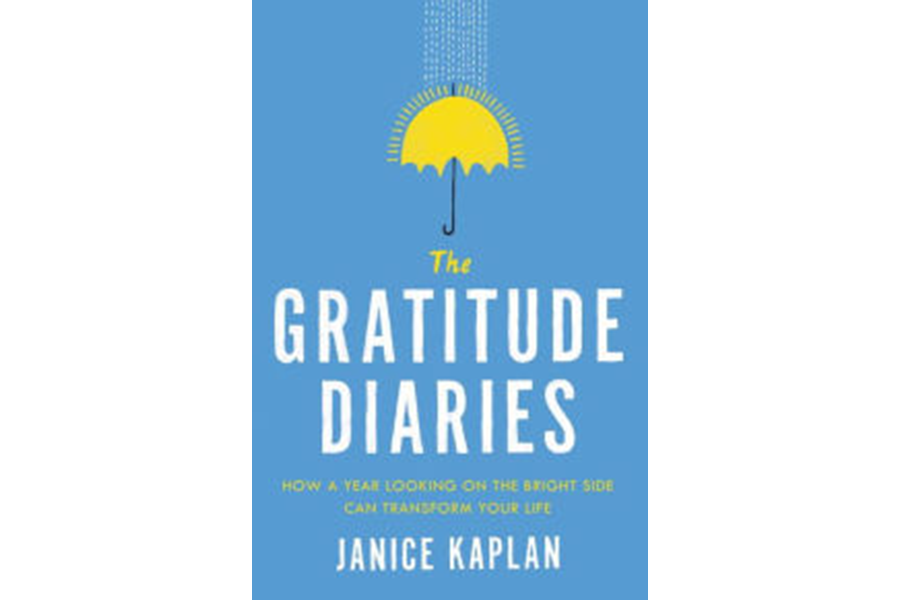'The Gratitude Diaries' explains why a grateful heart is a happy heart
Loading...
A “wildly successful” businessman takes a woman out to lunch. He’s become one of the Forbes 400 – the richest people in the United States. And in all other ways this man is living what most people would consider to be an extremely privileged life.
As they travel together in the back seat of a limo, the woman – a friend of author and journalist Janice Kaplan – congratulates the man for his success by showing him his name on the Forbes list. But instead of enjoying the moment, he “exploded in indignation when he noticed one of his competitors listed twenty places ahead of him.”
Ms. Kaplan’s suggestion: “[N]ever compare – just appreciate what you have.”
Indeed.
The Gratitude Diaries is filled with practical wisdom gained from Kaplan’s own efforts to be more grateful and from interviews on the subject of gratitude with psychologists, academics, friends, and other thoughtful people – even several movie stars. And it testifies to the good that redounds.
Kaplan’s resolution to be grateful was made in the wake of going to a dismal New Year’s Eve party where she listened to another woman grouse.
Realizing that she herself had much to be grateful for – but often wasn’t – she resolved to “spend the coming year seeing the sunshine instead of the clouds.”
She decided to “find one area to focus on each month – whether husband, family, friends, or work – and become my own social scientist. I wanted to see what happened when I developed an attitude of gratitude.” She also began a gratitude journal in which she writes every night.
It’s no news flash that being grateful is better than being grumpy – it’s undoubtedly good for you and everyone around you. But Kaplan takes this theme and in lively, vigorous prose thoroughly demonstrates the greatness of gratitude. And readers may come away from Kaplan’s book feeling that gratitude can be invigorating and joy-inducing just to read about.
Kaplan starts off by expressing more gratitude in her marriage, and moves on from there to her adult children, money matters, and “bad times.” One month she creates her own “no-complaining zone.” She even applies gratitude to weight loss.
In the marriage chapter, Kaplan comments: “When you expect everything, it’s hard to be grateful for anything. So I decided that now was the time to put aside impossible expectations and start appreciating [my] husband.”
Kaplan points out, “We get used to something – whether a husband, a house, or a shiny new car – and then forget why it seemed so special in the first place.” So Kaplan took a step back and started recognizing all over again what a fine man her husband is. Moreover, she started expressing to him this reawakened appreciation. The result: “[T]he warm feelings between us [became] stronger than ever.... [G]ratitude was making us both a lot happier.”
Kaplan, in this chapter and elsewhere, cites studies that suggest gratitude causes positive physiological and neurological changes – an idea some readers may find reductive. However, Kaplan mostly shares higher wisdom. Like this, from her “Making Bad Times Better” chapter: “If you can change something that’s making you unhappy, go ahead and change it. But if it’s done, gone, or inevitable, what greater gift can you give yourself than gratitude for whatever life did bring?”
In Kaplan’s own case, life has brought a dynamic career and a loving family. In addition to being the author, or coauthor, of 12 other books – 10 are novels – including two New York Times bestsellers, she was editor in chief of Parade magazine for several years. As a journalist, she’s done landmark people profiles, and she’s been a TV producer. Clearly, she brings to her “year of living gratefully” considerable life wisdom.
Kaplan finishes her compelling and convincing book about gratitude with a chapter that includes the story of her heartfelt reconciliation with her sister, a development that left both women “appreciating the good in the moment rather than fussing about the past.” Thus begins a “new friendship.”
Gratitude, Kaplan concludes, “lodged deeper and deeper into my heart and soul.... Gratitude affected how I looked at every event that happened. Being positive and looking for the good had become second nature – and that made me much happier.”
Kaplan’s book militates against a world attitude that can seem absorbed in disagreements and strife and preoccupied with unhappiness about the past, the future, and the present. The counterbalancing view expressed so persuasively in “The Gratitude Diaries” is in itself cause for gratitude.
David Hugh Smith is a writer living in Brookline, Mass.








